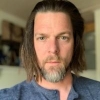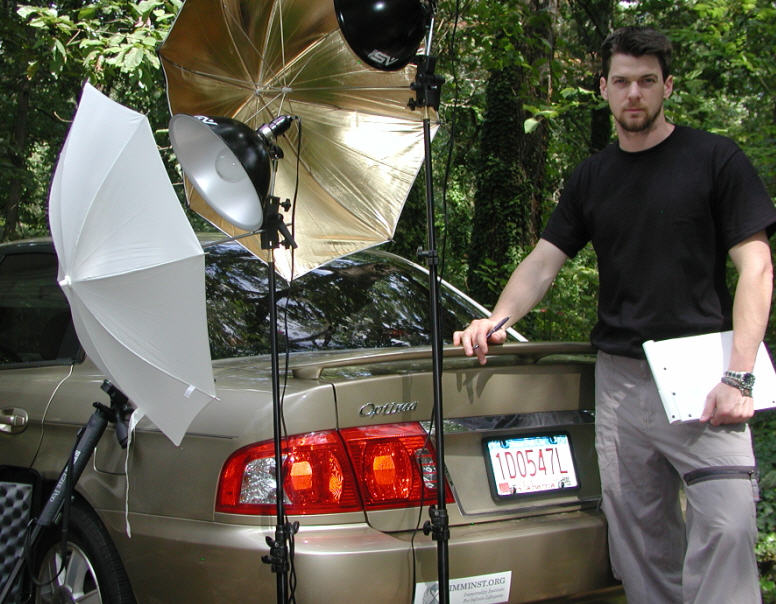I've put together a 10 minute video preview of the Exploring Life Extension, ImmInst Film Project including interview participants:
-David Kekich
-Aubrey de Grey
-Michael MichaelChik
-Justin Corwin
-James Dale
-Peter Voss
Video Download:
http://www.imminst.o...m/exploring.wmv = 22 Megs
ImmInst Film Project:
http://www.imminst.org/film
Bruce Klein posted on cryonet the url containing a preview of a cryonics/life extension/immortalist video documentary. Here it is:
http://www.imminst.o...m/exploring.wmvThe preview video file is about 21 Megs. I downloaded it and took a look at it.
I think this is a very important and useful project, and I commend Bruce for his efforts in this area.
The quality of the video and the lighting was good. I note that you have a panasonic dvx100a, which is apparently a rather expensive camera. The quality of that camera really paid off.
Jonathan has already made some comments about the documentary prototype which he posted on cryonet. I agree with Jon about his comments, especially the audio. Bruce is going to have to remix the audio, which I am sure he knows he has to do. However, it looks like the master audio from the first segment is pretty bad and may not be usable. Also, the video part of that first segment would not seem to be something useful at all. I do not see any use for that first segment with Kekich at all. It just doesn't seem like it would fit in with what you want to do.
Most of the other interviews look OK, in that they are of the right composition for this sort of thing, etc. The lighting was fine in almost all of them, although the audio seemed poor in maybe one or two of the interviews.
Perhaps the best part of the preview was the voiceover parts where the video was panned over a still image. Those segments allowed us to consider the central questions of the preview. Very professional panning. THe video of the stained glass window was interesting, and that sort of thing could be very useful for introducing some of the fundamental questions.
However, I guess my main criticism has to do with
the content of the interviews themselves. I did not see anything in any of them that I found compelling, attractive, intriguing etc. Part of it may be the subjects, and part of it may be the material, the particular quotes used. YOu might find it hard to get a believeable interview if they are scripted, but I still think that some sort of scripting might be needed to make the interviews more compelling. Perhaps more directed in terms of questioning the interviewees, pushing them by asking pointed questions, a dialogue. Perhaps you already have that sort of stuff, and it was just not in the preview...
Also, how can I say this? For one, the interviewees seemed to be-- in general--overly intellectual; in a way, they came across as somewhat stuffy, or maybe you could even say that they resorted to dogma, quoting phrases straight from the "Bible of Life Extensionism." Maybe it was just me. But having a documentary consisting of 130+ IQ life extension enthusiasts quoting the dogma, using the kind of complex sentence structure that we cryo/transhumanust types are wont to use, that may not be that most desirable content. That kind of sentence structure is great for written stuff, but it may be problematic in interviews.
In your future interviews you want to get some sort of footage of your interviewees interacting in their normal, everyday lives. Maybe you could get some footage of them at their jobs, or in their homes, interacting with family, pets, cooking, riding a bike, walking in the park, etc. Humanize them, etc.
Also, you might want to somehow work in some images or interviews of other types of people, like women, or like kids. Children can be very powerful on this sort of documentary, and their concepts and ideas of death, life etc are not set in concrete like adults. A couple of simple statements from them regarding some of the fundamental questions concerning this documentary-- that could work pretty well.
I liked it when you panned over the still images. And as a possible way to introduce some of the fundamental questions and concepts, I think that voiceover-while-panning-over-still-images, that has a lot of potential.
The thing is, you need some sort of good footage of ordinary people interacting in a way that is conducive to bringing up the fundamental questions. Those "fundamental questions" were more or less addressed in a way in the preview, but not particularly well.
What would be great would be some footage (or even panning over still images) of some sort of funeral rites or something like that. Now, there are stills and even video in the Wayback Machine/Internet Archives (archive.org) that is free to download and perhaps not copyrighted, but whether it could be used for this documentary, I do not know. But I would not be surprised if they had something related to funerals, or other cultural rites that may be related to death. A brief historical look at the intersection of human society and death may be a productive approach. Perhaps panning over historical/anthropological photos of funeral rites, religious ceremonies, etc, could be workable.
Also, once you have introduced the concepts/questions related to death, you may want to get some footage or stills related to our attempts to stave off death, i.e., medicine/healthcare etc. Again, archive.org may be a source.
The problem with getting new footage is the whole legal thing--you have to have subject approval, I think. But then there is the whole public question. Can you use footage taken in public places? I think so, but you need to research that....And then there are even copyright questions when it comes to using footage of public structures, buildings etc.
So what would be a workable structure or progression of ideas for the documentary? How do you introduce and progress into and develop the fundamental ideas and questions? How do you create the script?
Here are some fundamental blocks/units that might be considered as a sequence for the documentary:
A. Death and our relationship to it
--historical, cultural, rationalization, taboos, religion, etc. New ideas. Science Fiction. Pop culture examples (use of pop culture, Hollywood examples would entail dealing with copyright issues).
B. Medicine
--historical, scientific advances, cultural acceptance of new breakthroughs (organ transplant acceptance). What steps have we taken in the past to beat death? Why have we tried to beat death at all?
C. Transhumans
--what are their motivations. What are they like? How are they different, alike from the rest of society?
D. How do they justify their exotic ideas?
--interviews, scientific concepts, etc. Again, public domain images from archive.org could be useful here.
E. The Near Future, what does it hold for immortalism/transhumanism, Cryonics? This could be where you have Alcor/CI footage, etc. What are the principal entities/actors in this new movement?
Interview clips of transhumanists/cryonicists addressing any of the issues in A-E above could be used as well. A good tactic may be to introduce a general idea or question using a series of public domain still images, panned over, then use a short clip of one or more transhumanist interview subject speaking to this idea/question.
Anyway, these are just some of the ideas that I have come up with tonight.
No offense to anyone at all, BTW. Just trying to help. And thanks to Bruce for working on this project.
Edited by cryofan, 25 October 2004 - 07:17 AM.


























































